The automotive world is constantly evolving, and as urban mobility increasingly shifts towards compact and efficient vehicles, two models often come to the forefront of discussion: the Audi A1 and the Fiat 500. Both hatchbacks boast distinct designs, innovative technologies, and unique driving experiences, yet they cater to different audiences. This comparison will delve into their technical specifications, innovations, and overall driving experience to help you decide which model suits your needs.
Audi A1 vs Fiat 500 – Which model is better for everyday use?
Two cars, one duel: Audi A1 meets Fiat 500.
Which one wins in performance, efficiency and value for money? Find out now!
Design and Dimensions
The Audi A1 showcases a dynamic hatchback design that emphasizes luxury and sportiness. Measuring 4046 mm in length and 1756 mm in width, it provides a contemporary look while maintaining practicality. With a height of 1459 mm, it offers a spacious interior that accommodates five passengers comfortably.
In contrast, the Fiat 500 is more compact, with a length of just 3632 mm and a width of 1683 mm. Standing at 1527 mm tall, it exhibits a playful and retro aesthetic that has made it a fashion icon in the automotive world. However, it can only seat up to four passengers, which might limit its appeal for larger families or groups.
Powertrains and Performance
The Audi A1 is available with an array of petrol engines, ranging from 95 HP to a robust 207 HP. The impressive performance figures are complemented by quick acceleration times—from 0 to 100 km/h in as little as 6.5 seconds for the top variant. With dual-clutch automatic and manual gearbox options, it caters to both traditional and modern drivers. Additionally, its front-wheel-drive system enhances driving dynamics, providing a balance between comfort and sportiness.
On the other hand, the Fiat 500 has embraced electrification, offering an electric powertrain with outputs of up to 118 HP. With a maximum speed of 150 km/h, it's adequately powered for city driving. The electric 500 can accelerate from 0 to 100 km/h in approximately 9 seconds, offering a brisk urban experience. While its electric range can reach 321 km, it makes it a practical choice for environmentally conscious drivers.
Fuel Efficiency and Emissions
In terms of fuel consumption, the Audi A1 offers a range of efficiencies, with some models achieving as low as 5.3 L/100 km. Its CO2 emissions range from 120 to 147 g/km, giving it a respectable standing in terms of environmental impact in the petrol segment.
The Fiat 500, being fully electric, has zero emissions at the tailpipe and offers an astounding efficiency of 13-14.7 kWh/100 km, depending on the battery size and driving conditions. This makes the Fiat 500 particularly appealing for those looking to reduce their carbon footprint and navigate urban landscapes with minimal environmental impact.
Interior and Technology
Inside, the Audi A1 is equipped with high-quality materials and a modern infotainment system, featuring a digital cockpit that enhances the driving experience. Technology such as adaptive cruise control, lane assist, and premium sound systems are available, ensuring comfort and connectivity on the road.
The Fiat 500, while perhaps less luxurious, embraces a retro-modern style that appeals to its demographic. It features a user-friendly infotainment system with a digital display, and depending on the trim, it comes with several connected services. Features like mobile app integration and driver-assistance technologies add value to its quirky design.
Conclusion: Which is the Right Choice?
Choosing between the Audi A1 and Fiat 500 ultimately depends on individual preferences and priorities. The A1 excels in performance, luxury, and overall technology, making it a great option for those seeking a sportier hatchback with a touch of elegance. Its variety of engine options offers flexibility for different driving needs.
Conversely, the Fiat 500 stands out with its electric powertrain, urban agility, and fashionable design. It's ideal for city dwellers who prioritize sustainability and a distinctive style over outright performance.
Whichever model you choose, both the Audi A1 and Fiat 500 offer unique benefits that cater to different lifestyles, showcasing the diversity in the compact car segment today.
Here’s where it gets real: The technical differences in detail
Costs and Efficiency:
Price and efficiency are key factors when choosing a car – and this is often where the real differences emerge.
Fiat 500 has a barely noticeable advantage in terms of price – it starts at 18800 £, while the Audi A1 costs 19700 £. That’s a price difference of around 823 £.
Fuel consumption also shows a difference: Audi A1 manages with 5.20 L and is therefore slight more efficient than the Fiat 500 with 5.30 L. The difference is about 0.10 L per 100 km.
Engine and Performance:
Under the bonnet, it becomes clear which model is tuned for sportiness and which one takes the lead when you hit the accelerator.
When it comes to engine power, the Audi A1 has a convincingly edge – offering 207 HP compared to 118 HP. That’s roughly 89 HP more horsepower.
In acceleration from 0 to 100 km/h, the Audi A1 is distinct quicker – completing the sprint in 6.50 s, while the Fiat 500 takes 9 s. That’s about 2.50 s faster.
In terms of top speed, the Audi A1 performs clearly perceptible better – reaching 245 km/h, while the Fiat 500 tops out at 155 km/h. The difference is around 90 km/h.
There’s also a difference in torque: Audi A1 pulls evident stronger with 320 Nm compared to 220 Nm. That’s about 100 Nm difference.
Space and Everyday Use:
Cabin size, boot volume and payload all play a role in everyday practicality. Here, comfort and flexibility make the difference.
Seats: Audi A1 offers somewhat more seating capacity – 5 vs 4.
In curb weight, Fiat 500 is barely noticeable lighter – 1141 kg compared to 1175 kg. The difference is around 34 kg.
In terms of boot space, the Audi A1 offers convincingly more room – 335 L compared to 185 L. That’s a difference of about 150 L.
In maximum load capacity, the Audi A1 performs clearly better – up to 1090 L, which is about 540 L more than the Fiat 500.
When it comes to payload, Audi A1 evident takes the win – 470 kg compared to 325 kg. That’s a difference of about 145 kg.
Who wins the race?
The Audi A1 proves to be is largely superior and therefore becomes our DriveDuel Champion!
Audi A1 is the better all-rounder in this comparison.
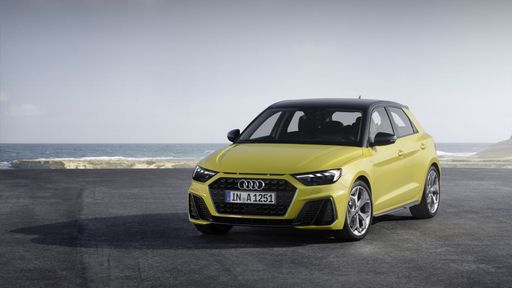 @ Audi AG
@ Audi AG
Audi A1
Audi A1
The Audi A1 is a compact premium hatch that wraps Audi's polished design and surprisingly grown-up cabin into a city-friendly package. It’s poised and fun to drive, a smart pick for buyers who want luxury flair without the fuss of a bigger car — and it makes tight parking feel almost enjoyable.
details @ Audi AG
@ Audi AG
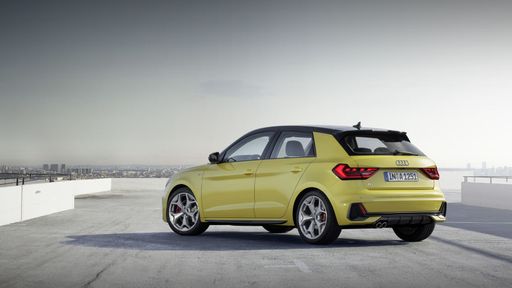 @ Audi AG
@ Audi AG
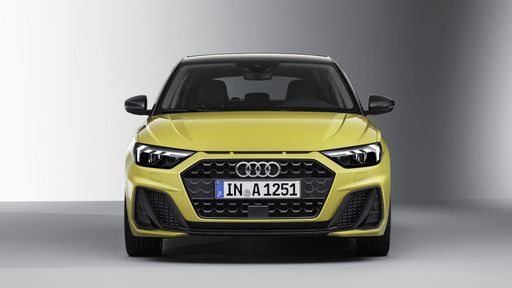 @ Audi AG
@ Audi AG
 @ Audi AG
@ Audi AG
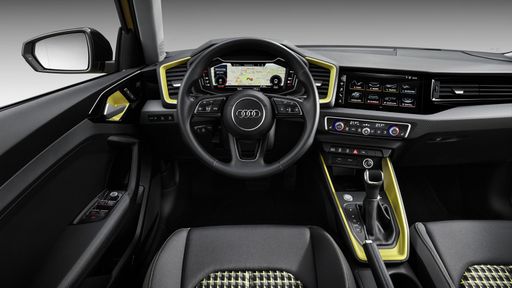 @ Audi AG
@ Audi AG
 @ Audi AG
@ Audi AG
Fiat 500
The Fiat 500 is a cheeky, retro‑styled city car that turns heads with its iconic looks and playful personality. Perfect for weaving through tight streets and easing into tiny parking spots, it’s aimed at buyers who want style and character more than grand touring prowess.
details @ Fiat / Stellantis Media
@ Fiat / Stellantis Media
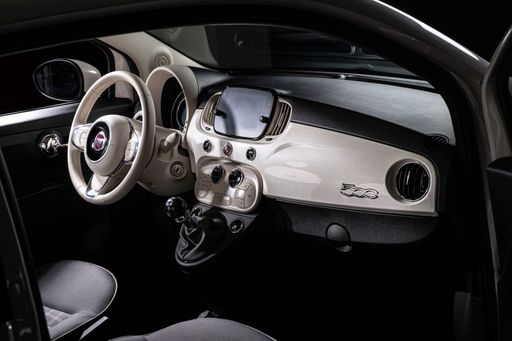 @ Fiat / Stellantis Media
@ Fiat / Stellantis Media
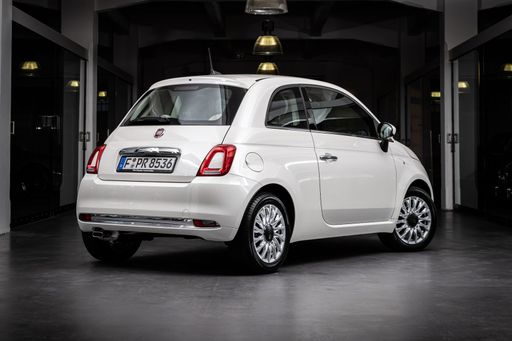 @ Fiat / Stellantis Media
@ Fiat / Stellantis Media
 @ Audi AG
@ Audi AG
|
 @ Fiat / Stellantis Media
@ Fiat / Stellantis Media
|
|
|
|
Costs and Consumption |
|
|---|---|
|
Price
19700 - 28300 £
|
Price
18800 - 30800 £
|
|
Consumption L/100km
5.2 - 6.4 L
|
Consumption L/100km
5.30 L
|
|
Consumption kWh/100km
-
|
Consumption kWh/100km
13 - 14.7 kWh
|
|
Electric Range
-
|
Electric Range
190 - 331 km
|
|
Battery Capacity
-
|
Battery Capacity
21.3 - 37.3 kWh
|
|
co2
118 - 146 g/km
|
co2
0 - 120 g/km
|
|
Fuel tank capacity
40 L
|
Fuel tank capacity
-
|
Dimensions and Body |
|
|---|---|
|
Body Type
Hatchback
|
Body Type
Hatchback
|
|
Seats
5
|
Seats
4
|
|
Doors
5
|
Doors
3 - 4
|
|
Curb weight
1175 - 1365 kg
|
Curb weight
1141 - 1475 kg
|
|
Trunk capacity
335 L
|
Trunk capacity
183 - 185 L
|
|
Length
4029 - 4046 mm
|
Length
3631 - 3632 mm
|
|
Width
1740 - 1756 mm
|
Width
1683 - 1684 mm
|
|
Height
1409 - 1459 mm
|
Height
1527 - 1532 mm
|
|
Max trunk capacity
1090 L
|
Max trunk capacity
440 - 550 L
|
|
Payload
410 - 470 kg
|
Payload
250 - 325 kg
|
Engine and Performance |
|
|---|---|
|
Engine Type
Petrol
|
Engine Type
Electric, Petrol MHEV
|
|
Transmission
Manuel, Automatic
|
Transmission
Automatic, Manuel
|
|
Transmission Detail
Manual Gearbox, Dual-Clutch Automatic
|
Transmission Detail
Reduction Gearbox, Manual Gearbox
|
|
Drive Type
Front-Wheel Drive
|
Drive Type
Front-Wheel Drive
|
|
Power HP
95 - 207 HP
|
Power HP
65 - 118 HP
|
|
Acceleration 0-100km/h
6.5 - 11.5 s
|
Acceleration 0-100km/h
9 - 16.2 s
|
|
Max Speed
182 - 245 km/h
|
Max Speed
135 - 155 km/h
|
|
Torque
175 - 320 Nm
|
Torque
220 Nm
|
|
Number of Cylinders
3 - 4
|
Number of Cylinders
3
|
|
Power kW
70 - 152 kW
|
Power kW
48 - 87 kW
|
|
Engine capacity
999 - 1984 cm3
|
Engine capacity
999 cm3
|
General |
|
|---|---|
|
Model Year
2025
|
Model Year
2023 - 2025
|
|
CO2 Efficiency Class
D, E
|
CO2 Efficiency Class
A, D
|
|
Brand
Audi
|
Brand
Fiat
|
What drive types are available for the Audi A1?
Available configurations include Front-Wheel Drive.
The prices and data displayed are estimates based on German list prices and may vary by country. This information is not legally binding.
